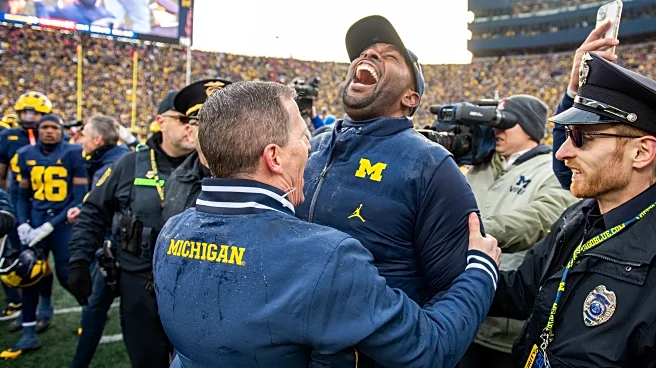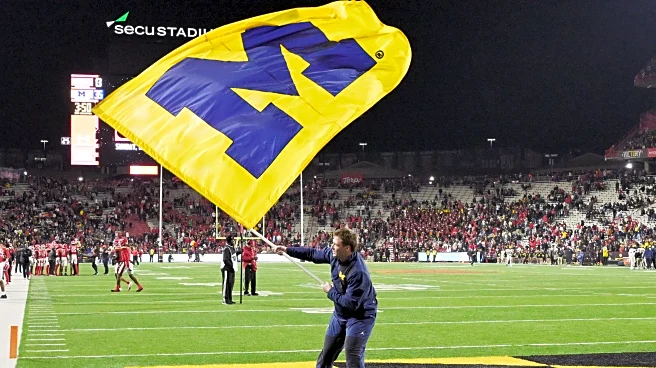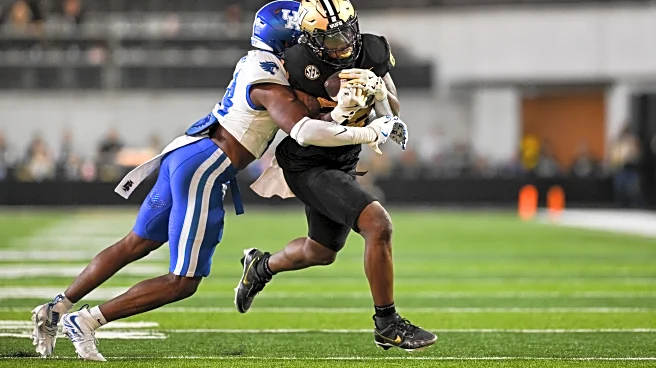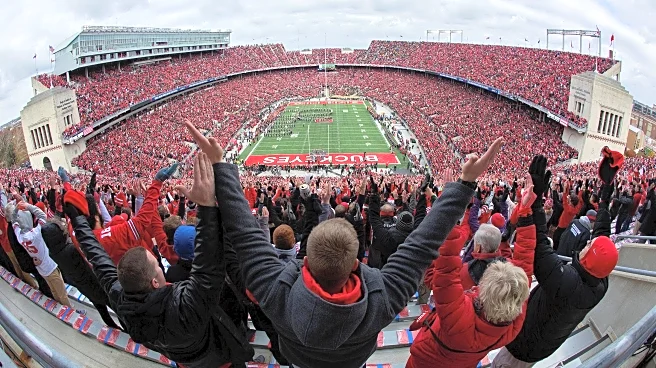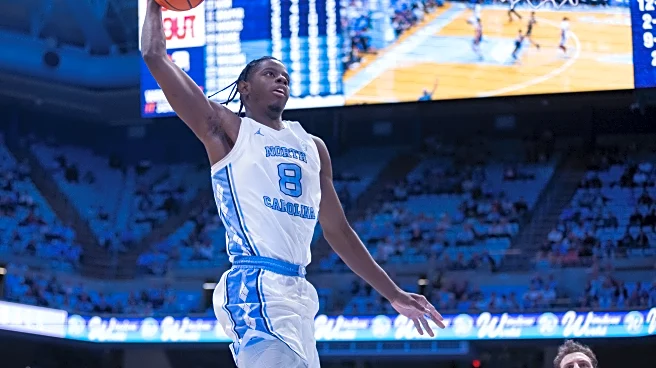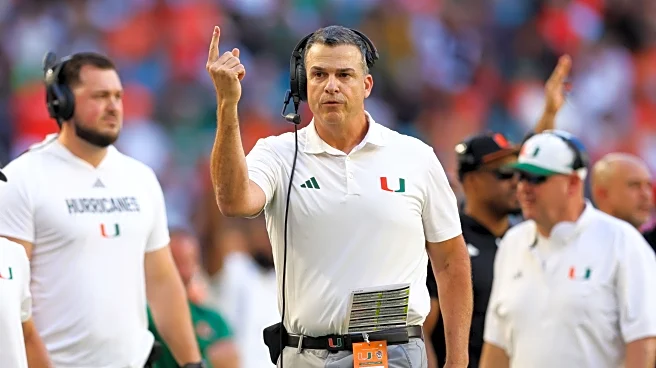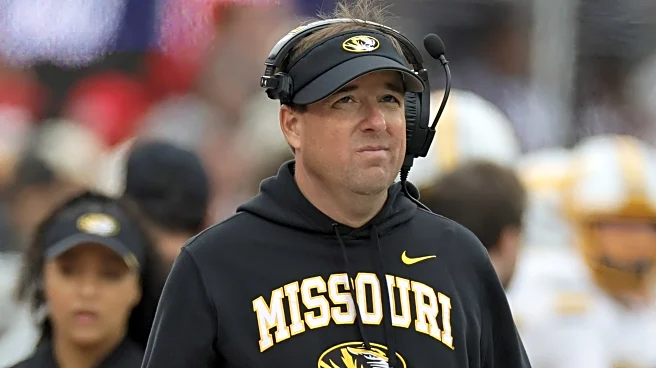The period between Thanksgiving and Christmas is quiet for much of the United States. It’s referred to as “Stick Season” in the northeast because of the dreary conditions with no leaves on the trees and the ground
laden with twigs. If you work in an office, you’d know it as that lazy time of year when hardly any work gets done and the midday darkness makes people want to go home early.
In the midwest — particularly in Michigan and Ohio — it means something different. After the cling wrap has been put on the Thanksgiving leftovers, the clock starts to tick slowly. A wait that’s roughly 36 hours long starts to feel like an eternity as Michigan and Ohio State draw closer to taking the field in The Game. Following which, one fan base begins a period of misery and the other begins one of boasting and jubilation that no other regular season matchup can provide.
This weekend represents rivalry week for much of the college football landscape. Auburn and Alabama square off in the Iron Bowl, Ole Miss and Mississippi State duke it out in the Egg Bowl, and Georgia and Georgia Tech partake in what’s known as “Clean, Old-Fashioned Hate.” But none of them are The Game. Not even close.
Even if you look at the professional ranks, hardly anything compares. There’s Red Sox-Yankees, Packers-Bears, Lakers-Celtics, USA-Canada. They’ve all got their moments, but nothing holds the stakes of The Game.
In 1835, the then-territory of Michigan and state of Ohio became engaged in what became known as the “Toledo War.” The two sides were at odds over the Toledo Strip, a piece of land that covers the current border between the states and contains the city of Toledo. In the end, this wasn’t a war so much as it was a political standoff that resulted in Michigan ceding the land in exchange for what is now the Upper Peninsula (a win for the north, I’d argue), but the tone that was set nearly 200 years ago, along with the bitterness, rages on today.
Instead of a battlefield, the states take opposition on the gridiron. The first meeting came in Ann Arbor in 1897, with Gustave Ferbert’s Wolverines winning by a 34-0 final score. Since 1918, the two sides have played every year save for the COVID year of 2020. Michigan leads the series all-time with a record of 62-51-6, but the Buckeyes have dominated this century by winning 17 matchups since 2000.
It’s not a game meant for the faint of heart. Plenty of programs have been at odds with each other longer and squared off more times than Michigan and Ohio State, such as Army-Navy, Texas-Oklahoma and Harvard-Yale to name a few. But none carry this level of hatred.
The 10-year war began in 1969, when the two greatest coaches in the history of the rivalry — Woody Hayes and Bo Schembechler — occupied their respective sidelines. It’s perhaps the period that made the great rivalry what it is today.
It was during that time when Hayes refused to utter the word “Michigan” at all and referred to the maize and blue as “The Team Up North.” Perhaps even more infamously in 1972 while on a recruiting trip, Hayes refused to stop and fill up his near-empty car with gas on the Michigan side of the state line. In 1973 before the meeting in Ann Arbor, Hayes’ team ran onto the field and tore down the famous “Go Blue” banner at midfield, much to the dismay of Bob Ufer.
In 1986, a bold quarterback by the name of Jim Harbaugh added some fuel to the fire by making his guarantee that his Wolverines would defeat the Buckeyes.
“I guarantee you we’ll beat Ohio State and be in Pasadena,” Harbaugh said.
He was true to his word on both fronts, with Michigan winning by a 26-24 final score in Columbus before losing in the Rose Bowl on New Year’s Day to Arizona State, just one day after Sun Devils head coach John Cooper accepted the job to become Ohio State’s new head man.
Michigan had its way with Cooper’s Buckeyes throughout the ‘90s, with the Wolverines winning 10-of-13 matchups after his hire. Two of Michigan’s iconic Heisman winners would put their stamp on the rivalry with punt return touchdowns in those games, with Desmond Howard going for 93 yards and striking the pose in the end zone in 1991, and Charles Woodson going for 78 yards in 1997.
Cooper was by all means a solid coach, going 111-43-4 over 13 seasons, but there was a maize and blue-colored thorn in his side that cost him is job. Where else can so much good be outdone by the outcome of one game?
And then came the 2000s, when Ohio State’s run of dominance began. No game was bigger than the 2006 matchup where both teams entered 11-0 and ranked No. 1 and No. 2 in the BCS poll. Bo Schembechler had passed away the day before, but his Wolverines couldn’t pull out a victory in his honor, eventually losing a thrilling matchup by a 42-39 final score.
For the next several years, Michigan was hardly any match for Ohio State, losing all but one matchup between 2007-2014. But new hope arrived when that same confident (and maybe cocky) quarterback returned home to coach his alma mater.
Harbaugh could never solve the Rubik’s Cube that was an Urban Meyer-led team, suffering a heartbreaking loss in 2016 and a blowout loss in 2018. Even when Ryan Day took the reigns in 2019, it didn’t matter — Harbaugh was Michigan’s prodigal son beloved by fans until the last week in November when the sentiment around him would drastically change.
“I think we just take it more seriously than they do — I think it just means more at Ohio State, so that’s pretty much I think the big reason why we have more success than they do,” is what Justin Fields said following his team’s win in 2019. Little did anyone know the tide would would change on that day.
Since then, the Wolverines have rattled off four straight wins, with each iteration taking on its own personality. In 2021, it was grounding and pounding through the snow; in 2022, it was explosive plays in enemy territory; in 2023, it came with an acting head coach in the midst of the sign-stealing investigation; and in 2024, it came as a 21-point underdog to the eventual national champs on their home turf.
While it might not be the most exciting of Michigan’s last four wins in The Game, the 2024 chapter perhaps defines its meaning better than any other. Inside a stunned-silent Ohio Stadium after the final whistle, the teams became engaged in another battle after Michigan planted its flag in the middle of the block “O,” 189 years after it had first tried to stake its claim on land to the south.
“Ryan Day has a Michigan problem. He’s John Cooper 2.o. Get him out of here!” quickly became the sentiment, even though there was still a championship to play for and eventually win. A group of Buckeyes, including current NFL players Emeka Egbuka, Jack Sawyer, TreVeyon Henderson and J.T. Tuimoloau, achieved one of college football’s top prizes. But they will forever have hollow careers having never beat their rival to the north.
No other game does this. No other game forms a player, a coach, or a program’s whole existence like The Game. Both teams have had their success in the past on a national level, but national respect is far from the most important thing to either. Before a crowd of reporters at Big Ten Media Day in 2021, Harbaugh once again made his claim to beat Ohio State or “die trying.” His program overhauled its entire philosophy in the hopes of eventually winning a conference and national championship, but with the primary goal of exorcising their scarlet and gray demons.
Other programs don’t do that. Alabama doesn’t fire coordinators and change their offensive scheme just to beat Auburn. Florida doesn’t do that to beat Florida State. Clemson doesn’t do that to beat South Carolina. USC doesn’t do that to beat Notre Dame. The list goes on and on.
In the FBS, 134 programs buckle their chinstraps and lace up their cleats in the fall after turning in countless reps in the weight room and on the practice field all offseason in the ultimate pursuit of a national title. Michigan and Ohio State do the same, but with the goal of beating the other at the front of their mind. After all, the sign in Schembechler Hall doesn’t read, “What are you doing to win the National Championship today?” and the clock in the Woody Hayes Athletic Center isn’t counting down to a day in late January.
In the southeast, they claim “it just means more,” but in the north, this means more than anything.
An image sticks with me from the game in 2021. Having lost eight in a row, Michigan needed just one more stop in the final two minutes to finally secure their long-awaited victory. C.J. Stroud completed a pass to Chris Olave on fourth down, but was tackled well short of the sticks to end the game. Amidst the chaos and falling snow inside Michigan Stadium, several members of Michigan’s defense fell to their knees and buried their heads in their hands in realization they’d accomplished their ultimate goal.
Vince Lombardi said, “Any man’s finest hour, his greatest fulfillment to all he holds dear, is that moment when he has to work his heart out in a good cause and he’s exhausted on the field of battle, victorious.” That day was Michigan’s good cause.
It comes again this Saturday.
